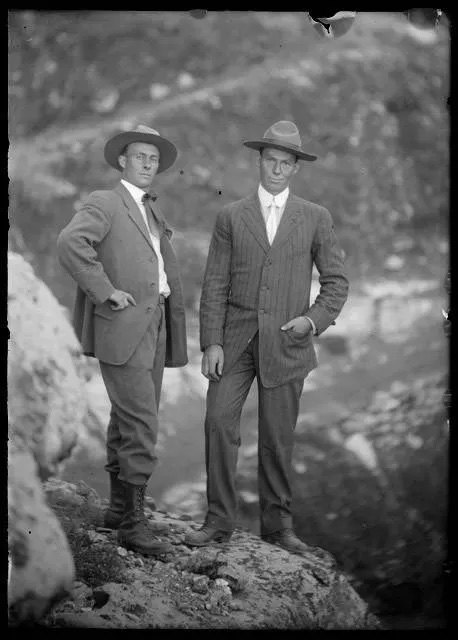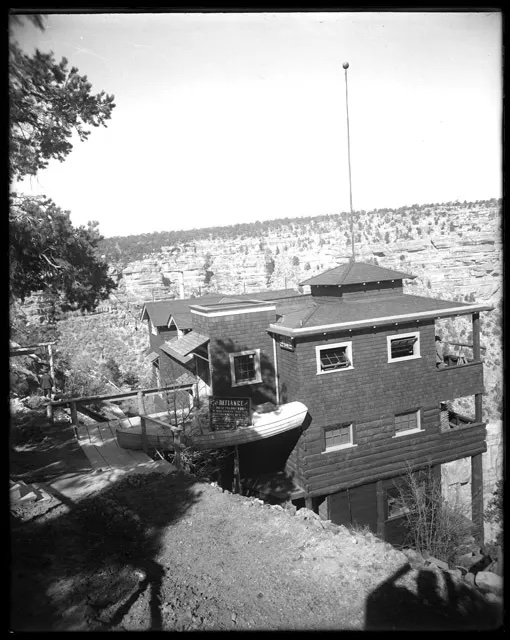Grand Canyon National Park recently announced that the park will be temporarily closing to overnight hotel stays starting on December...


The Grand Canyon is one of the most painted and photographed places in the world—and for good reason. Who wouldn’t want to try and capture the majesty of this natural wonder to admire again and again? The Kolb brothers certainly understood this, and they made it their life’s work to do just that. Their passion for photography and the canyon turned into a business that left a lasting legacy on the South Rim.
 Born and raised in Pittsburgh, the elder Kolb brother, Ellsworth, grew tired of life in the East and headed west at age 25. He eventually found work cutting wood in Williams, Arizona. It was there that he fell in love with the area—and especially with the Grand Canyon. Envisioning a future in the canyon, Ellsworth convinced his younger brother Emery to join him and see it for himself.
Born and raised in Pittsburgh, the elder Kolb brother, Ellsworth, grew tired of life in the East and headed west at age 25. He eventually found work cutting wood in Williams, Arizona. It was there that he fell in love with the area—and especially with the Grand Canyon. Envisioning a future in the canyon, Ellsworth convinced his younger brother Emery to join him and see it for himself.
Emery Kolb arrived at the Grand Canyon in 1902, a year after Ellsworth, with little more than a camera and a dream. The brothers struck a deal with Ralph Cameron, then-owner of the Bright Angel Trail and its mining claims, to set up shop at the trailhead. At the time, many tourists explored the canyon on mule rides, and the Kolb brothers saw an opportunity. They began photographing these tourists on their journeys.
But the business wasn’t as simple as snapping a photo and handing it over. The Kolbs had to get creative to keep things running. Their first studio was a flimsy tent cabin—lacking both running water and a darkroom, both essential for developing film. Undeterred, the brothers hauled water from distant cattle tanks and used abandoned mineshafts as makeshift darkrooms.
After a few years of operating this way, they renegotiated their deal with Cameron and were granted permission to build a proper structure. Completed in 1904, their cliffside cabin served as both home and studio. While an upgrade from the tent, it still lacked basic utilities like water and electricity. Ever resourceful, the brothers established a darkroom four miles down the Bright Angel Trail at Havasupai Gardens, where a spring provided a steady water source.
In 1905, Emery married Blanche, and in 1908 they welcomed their only child, Edith. The family lived in the rim-side cabin, and Blanche and Edith often accompanied the brothers on their canyon adventures, helping with the business whenever they could.
As their photography business grew, so did the competition. The Fred Harvey Company had arrived on the scene, building the luxurious El Tovar Hotel and catering to well-to-do tourists. Tensions between the Kolbs and the Harvey Company were palpable. In response, the brothers decided to do something bold.
In a groundbreaking move, Emery and Ellsworth embarked on a river trip through the Grand Canyon to film the landscape—a feat that had never been done before. Upon their return, they toured the country, screening their film and sharing stories of their journey. The tour was largely a success. Back home, Emery continued to show the film daily in their newly built auditorium—an addition to the original cabin. The film brought them fame and financial growth, but it also sparked disagreements about how to run the business.

By 1913, the tension between the brothers had escalated. They ultimately decided that only one of them would continue at the canyon. Legend has it that they settled the matter with a coin toss. Emery won and remained at the Grand Canyon, while Ellsworth left. Though they later reconciled, Ellsworth never returned to the family business.
When the Grand Canyon became a national park, Emery continued operating under a contract with the National Park Service. In 1962, two years after Ellsworth’s death, his contract was renewed—but with a clause that devastated him. The Park Service had plans for what Grand Canyon Village should look like and saw the Kolb Studio as out of place. Their plan was to tear it down upon Emery’s death.
Emery was furious. He had hoped his daughter Edith would take over the business, and the clause would strip her of that opportunity. Fortunately, the Historic Sites Act—which protected buildings over 50 years old—intervened just in time. The studio was saved and Edith could stay if she chose.
Emery Kolb continued living and working in the studio until his death in 1976. He donated his life’s work—including thousands of photographs and the historic canyon film—to Northern Arizona University. He is buried in the Pioneer Cemetery at Grand Canyon Village on the South Rim.
Today, the Kolb Studio still stands at the head of the Bright Angel Trail. It serves as a museum, preserving and honoring the work and spirit of the Kolb brothers—two pioneers who helped us all see the Grand Canyon through a new lens.
You can check out some of their photos at the Cline library
Want to learn about some other famous Grand Canyon figures? Check out these other blogs!
If you’re rafting when there are monsoons in Grand Canyon, you might experience something incredible Imagine this: It’s your second day in the canyon and you are overwhelmed by how monumentally tall the walls around you seem to have gotten in such a short time. In the...
Bugs in Grand Canyon! With Halloween at the end of the week, it will be hard to go anywhere without being inundated by pumpkins, spider webs, costumes, and candy. In the spirit of the season, we thought you might like to know a bit about some of the more...
Grand Canyon Q&A: A Conversation with 7th Graders This past week, I got a call from our office asking if I’d be willing to talk to some seventh graders about the Grand Canyon. It was definitely an unusual request for me, but of course I said yes. When I...